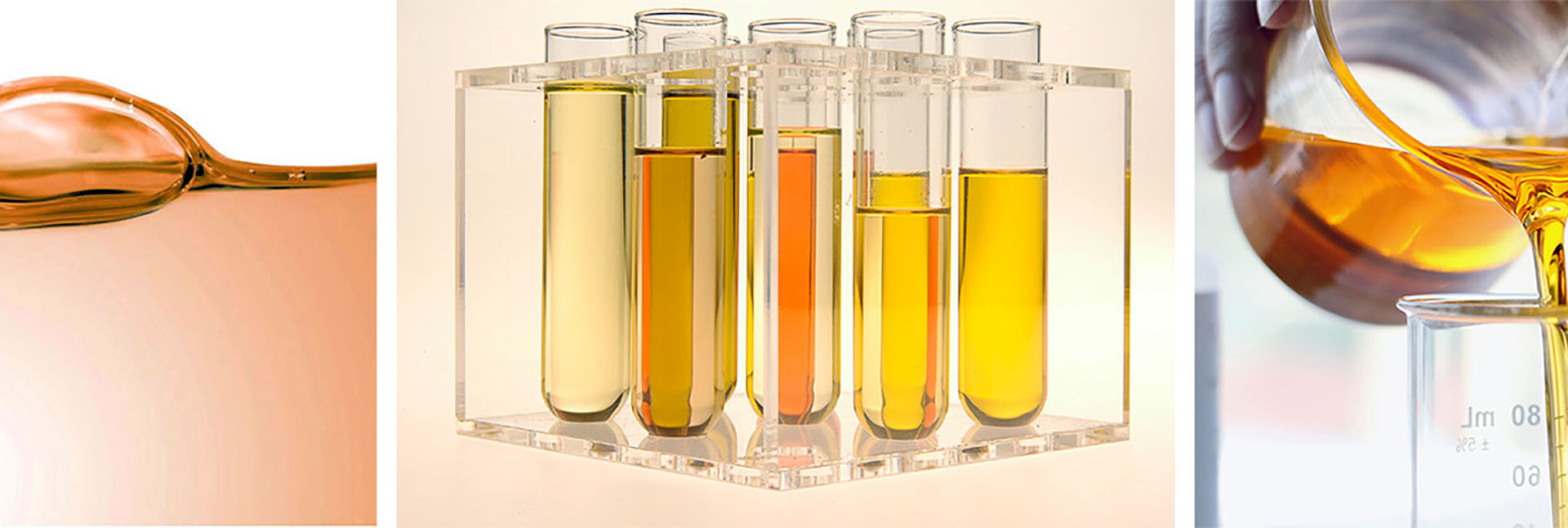
HZME
Your chemical business partner!
Oleochemicals
Chemical compounds derived from natural fats and oils

What Are Oleochemicals?
Oleochemicals are chemical compounds derived from natural fats and oils that can be used as raw materials or as supplemental materials in a variety of industries. Oleochemicals can be used as a substitute for petroleum-based products known as petrochemicals.
Categories

Fatty alcohols:
Fatty alcohols (or long-chain alcohols) are usually high-molecular-weight, straight-chain primary alcohols, but can also range from as few as 4–6 carbons to as many as 22–26, derived from natural fats and oils. Some commercially important fatty alcohols are lauryl, stearyl, and oleyl alcohols. They are widely used in industry. As with fatty acids, they are often referred to generically by the number of carbon atoms in the molecule, such as “a C12 alcohol”, that is an alcohol having 12 carbons. Fatty alcohols are mainly used in the production of detergents and surfactants. They are components also of cosmetics, foods, and as industrial solvents. Due to their amphipathic nature, fatty alcohols behave as nonionic surfactants. They find use as co-emulsifiers, emollients and thickeners in cosmetics and food industry. About 50% of fatty alcohols used commercially are of natural origin, the remainder being synthetic.
Ethoxylated Fatty Alcohols:
Alcohol ethoxylates are often converted to related species called ethoxysulfates. Alcohol ethoxylates and ethoxysulfates are surfactants, used widely in cosmetic and other commercial products. Industrial ethoxylation is primarily performed upon fatty alcohols in order to generate fatty alcohol ethoxylates (FAE’s), which are a common form of nonionic surfactant. Alcohol ethoxylates (AE) and alcohol ethoxysulfates (AES) are surfactants found in products such as laundry detergents, surface cleaners, cosmetics, agricultural products, textiles, and paint.
Surfactants:
Surfactants are compounds that lower the surface tension (or interfacial tension) between two liquids, between a gas and a liquid, or between a liquid and a solid. Surfactants may act as detergents, wetting agents, emulsifiers, foaming agents, and dispersants. Surfactants play an important role as cleaning, wetting, dispersing, emulsifying, foaming and anti-foaming agents in many practical applications and products, including detergents, fabric softeners, emulsions, soaps, paints, adhesives, inks, anti-fogs, ski waxes, snowboard wax, deinking of recycled papers, in flotation, washing and enzymatic processes, laxatives.
– Sodium Lauryl Sulfate (SLS)
– Sodium Lauryl Ether Sulfate (SLES)

A fatty acid is a carboxylic acid with a long aliphatic chain, which is either saturated or unsaturated. Most naturally occurring fatty acids have an unbranched chain of an even number of carbon atoms, from 4 to 28. Fatty acids are usually not found in organisms, but instead as three main classes of esters: triglycerides, phospholipids, and cholesteryl esters. Fatty acids are mainly used in the production of soap, both for cosmetic purposes and, in the case of metallic soaps, as lubricants. Fatty acids are also converted, via their methyl esters, to fatty alcohols and fatty amines, which are precursors to surfactants, detergents, and lubricants. Other applications include their use as emulsifiers, texturizing agents, wetting agents, anti-foam agents, or stabilizing agents.

RBD Palm Oil (RBDPO)
Palm oil is an edible vegetable oil derived from the mesocarp (reddish pulp) of the fruit of the oil palms. Palm oil is naturally reddish in color because of a high beta-carotene content. It is not to be confused with palm kernel oil derived from the kernel of the same fruit or coconut oil derived from the kernel of the coconut palm. After milling, various palm oil products are made using refining processes. First is fractionation, with crystallization and separation processes to obtain solid (palm stearin), and liquid (olein) fractions. Then melting and degumming removes impurities. Then the oil is filtered and bleached. Physical refining removes smells and coloration to produce “refined, bleached and deodorized palm oil” (RBDPO) and free fatty acids, which are used in the manufacture of soaps, washing powder and other products. RBDPO is the basic palm oil product sold on the world’s commodity markets.
RBD Palm Kernel Oil (RBDPKO)
Palm kernel oil is an edible plant oil derived from the kernel of the oil palm Elaeis guineensis. It should not be confused with the other two edible oils derived from palm fruits: palm oil, extracted from the pulp of the oil palm fruit, and coconut oil, extracted from the kernel of the coconut. Splitting of oils and fats by hydrolysis, or under basic conditions saponification, yields fatty acids, with glycerin (glycerol) as a byproduct. Resembling coconut oil, palm kernel oil is packed with myristic and lauric fatty acids and therefore suitable for the manufacture of soaps, washing powders and personal care products.
RBD Coconut Oil (RCNO)
Coconut oil, or copra oil, is an edible oil extracted from the kernel or meat of mature coconuts harvested from the coconut palm. It has various applications. Refined, bleached, and deodorized (RBD) oil is usually made from copra, dried coconut kernel, which is pressed in a heated hydraulic press to extract the oil. Unlike virgin coconut oil, refined coconut oil has no coconut taste or aroma. RBD oil is used for home cooking, commercial food processing, and cosmetic, industrial, and pharmaceutical purposes.

Glycerol also called glycerine or glycerin is a simple polyol compound. It is a colorless, odorless, viscous liquid that is sweet-tasting and non-toxic.

Ethylene Glycol Di Stearate (EGDS)
Glycol distearate is the diester of stearic acid and ethylene glycol. It is mostly commonly encountered in personal care products and cosmetics where it is used to produce pearlescent effects as well as a moisturizer.
Ethylene Glycol Mono Stearate (EGMS)
EGMS (glycol monostearate or ethylene glycol monostearate) or Glycol Stearate, is the ester derived from Stearic Acid and Ethylene Glycol. … Glycol Stearate is typically used as a pearlizing agent to give your surfactant products (shampoos and body wases for example) a pearl or pearlized look.

Soap Noodles are made from vegetable oils, such as palm oil, coconut oil or olive oil, and/or animal fats (tallow). These are ‘saponified’, usually using sodium hydroxide, to form a salt of the fatty acids. Soap Noodles constitute the very basic form of soap.